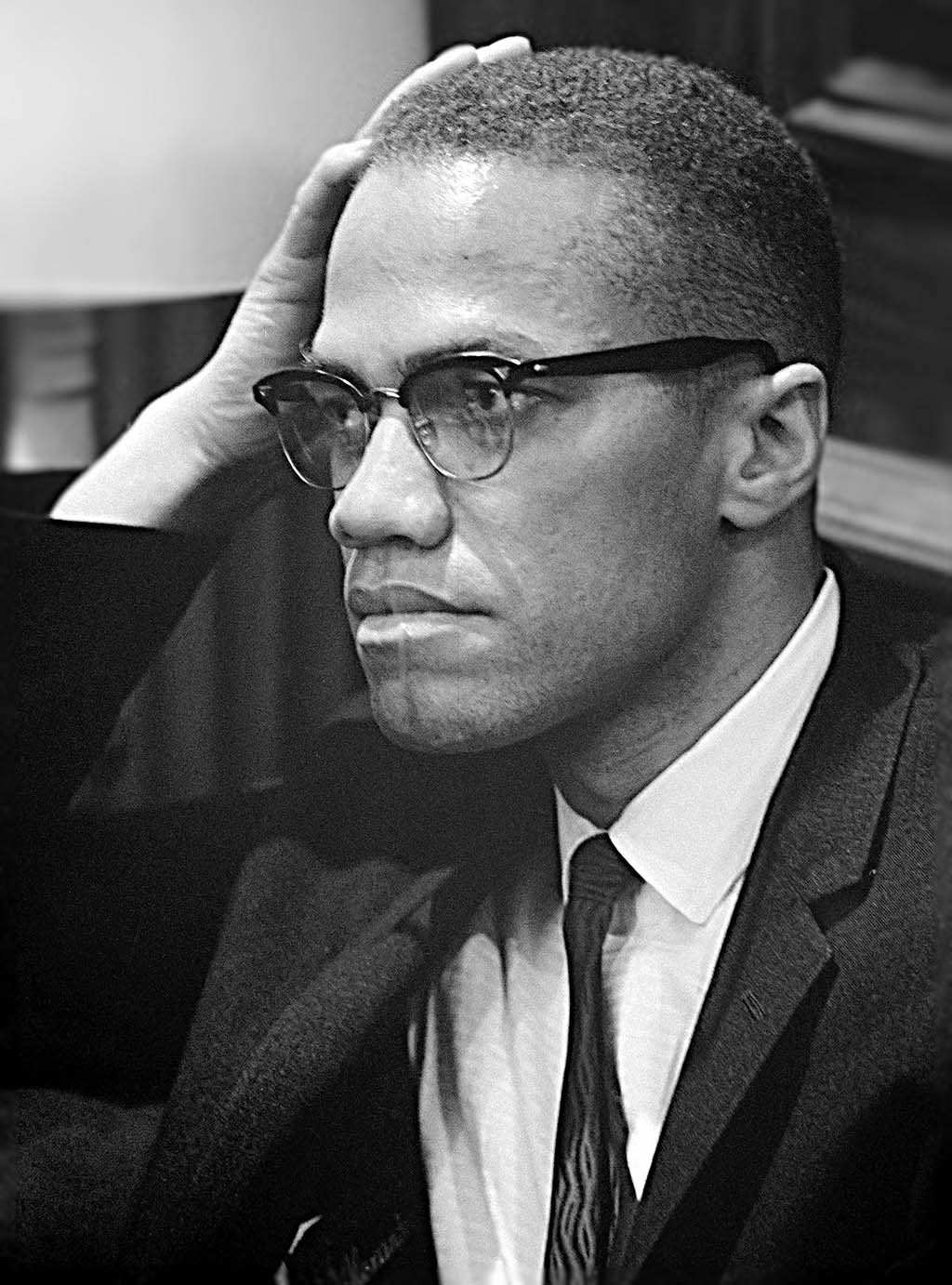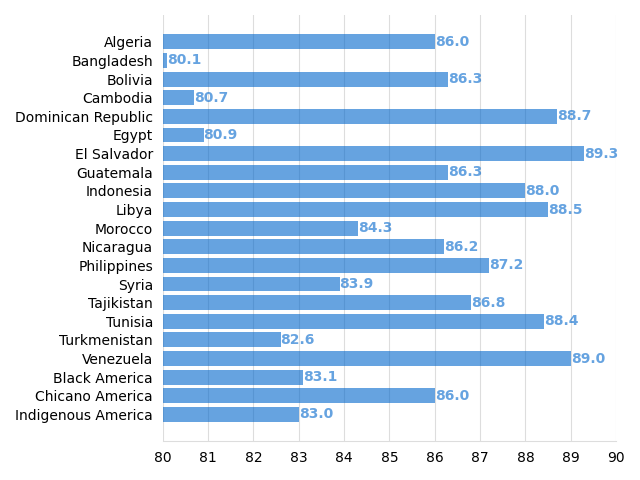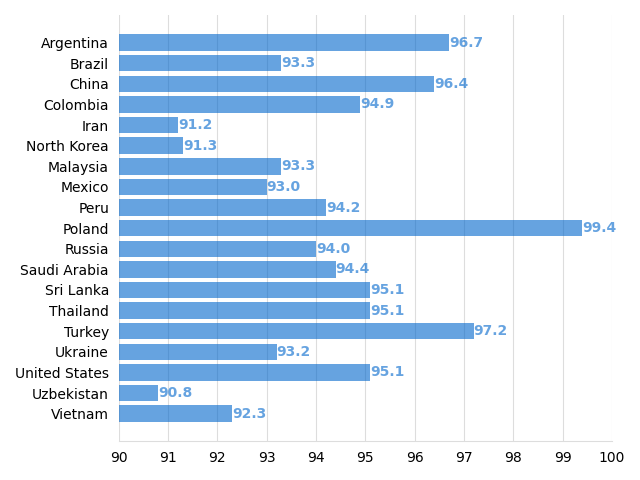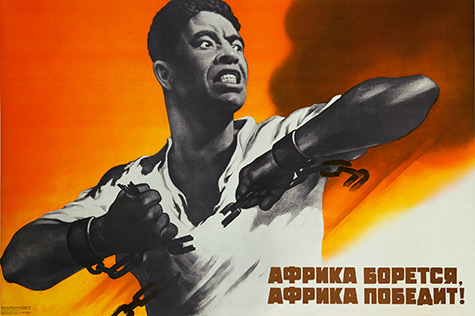America is often called a “melting pot”, which describes the tendency for a culturally heterogeneous society to become more homogenous over time. Advocates of multiculturalism prefer the less discriminatory and more accurate “salad bowl” analogy. It is less discriminatory because “melting pot” implies that ethnic and cultural minorities must fully assimilate into mainstream, in a word, white, American culture. It is more accurate because, while the American people do integrate into one multicultural society, different cultures maintain separate identities, and in many cases an ethnic minority may dominate a particular territory.
For any progressive person, the question inevitably leads to: how can we best ensure the long-term rights and prosperity of ethnic and cultural minorities? First we will discuss “national character” in a general sense.
National Character
We will use the following Marxist definition of nation:
A nation is a historically constituted, stable community of people, formed on the basis of a common language, territory, economic life, and psychological make-up manifested in a common culture.
-Marxism and the National Question
From this definition, we can discern the nations in the United States consisting of ethnic minorities: Black Americans in the Deep South, Chicanos in the Southwest, and all of the various indigenous peoples.
The nations in question visually:


The unique histories and economic conditions of these regions have inevitably contributed to a distinct culture and identity of the people that reside in them. It must be noted that ethnicity plays no part in national character:
This community [a nation] is not racial, nor is it tribal. The modern Italian nation was formed from Romans, Teutons, Etruscans, Greeks, Arabs, and so forth. The French nation was formed from Gauls, Romans, Britons, Teutons, and so on. The same must be said of the British, the Germans and others, who were formed into nations from people of diverse races and tribes.
-Marxism and the National Question
Due to America’s unique history of racial oppression, the nations described earlier happen to coincide with ethnicity by coincidence. Black Americans were brought primarily to the southern US by the Trans-Atlantic Slave Trade, several states in the southwest were annexed from Mexico, and indigenous people were forced onto reservations.

Malcolm X was a Black nationalist and believed in cultivating a Black national identity.
For the politically naive, Black nationalism, the ideology of Malcolm X and the early Black Panther Party (they switched to Marxism-Leninism), might be mistaken as the Black equivalent of white nationalism, but this is entirely not the case. There is no common white culture, history, or anything of the sort. To argue otherwise is to promote hate. Black nationalism simply seeks to develop and maintain Black national identity.
However, there are some members of these minority groups that feel that they are part of the United States, so we could say they are quasi-nations; above all else, what it means to be Black, Chicano, or Indigenous must be determined by the minority groups themselves.
Self-determination
We are interested in nations, because the ability to discern them leads to their right to self-determination, a cardinal principle in both Marxism-Leninism and international law. For our discussion of American racism, simply asking white Americans to “check their privilege” or relying on the goodwill of white lawmakers are simply not enough. Minorities must have the ability to determine their own fate as a community.
We will lean on Lenin’s conclusion that self-determination is manifested by the formation of a sovereign state:
Consequently, if we want to grasp the meaning of self-determination of nations, not by juggling with legal definitions, or “inventing” abstract definitions, but by examining the historico-economic conditions of the national movements, we must inevitably reach the conclusion that the self-determination of nations means the political separation of these nations from alien national bodies, and the formation of an independent national state.
-The Right of Nations to Self-Determination
Lenin’s argument ignores various legal definitions, of this or that race or ethnicity, that do not reflect the historical and economic development of national character in modern society. Put simply, capitalism has a natural tendency to expand into new markets and to concentrate wealth, and for capitalism to entirely supplant feudalism in a given country there must be politically united territories whose population speaks a common language. These conditions are prerequisite for the free and extensive commerce associated with modern capitalism.
To be clear, white socialists should never independently advocate for a separate Black, Chicano, or Indigenous nation, because it looks like segregation to do so. The point is for ethnic minorities to determine their own future and create their own movement with the support of white socialists. If they chose to separate, they should have the right to do so.
National minorities were a central component of Soviet ideology and remain an important part of political life in China. The Soviet of the Nationalities, the upper chamber of the Soviet Union’s Congress had seats for each union republic, autonomous republic, and autonomous oblast. Similarly, China has 55 officially recognized ethnic minorities, with varying degrees of autonomy. The Xinjiang province, for example, is officially the Xinjiang Uyghur Autonomous Region. Russia and China are interesting examples, because they actually have quite similar historical development to the United States. Russia was at one time an empire, China’s history is one of conquest by the various dynasties, and the United States’ mainland territory is largely defined by Manifest Destiny. In the case of no separation, American socialists may be able to take inspiration for how to organize national autonomy from Russia and China.
Quantifying Racial Oppression
We will use what we know of nations to quantify the effects of racism in the United States. We will answer the question: if Black Americans, Chicanos, and Indigenous Americans were to become their own countries, at what level of development would they be at? There are several methods to quantify the well-being of a country. I chose the Physical Quality of Life (PQL) Index, because the data needed to calculate it is easier to come by than something like the UN Human Development Index. PQL has also been used in this excellent paper from 1986. PQL Index is given by:
We will use what we know of nations to quantify the effects of racism in the United States. We will answer the question: if Black Americans, Chicanos, and Indigenous Americans were to become their own countries, at what level of development would they be at? Because these are nations, with unique economic histories, we will compare their develometn to the level of development of countries. Our metric will be Physical Quality of Life, similar to this American Journal of Public Health study that compared the level of development of capitalist countries and socialist countries. The study states:
Economic development is a widely studied historical process that exerts profound effects on the physical quality of life (PQL).
$$ PQL = \frac{LiteracyRate + 0.625(166 - InfantMortality) + 2.7(LifeExpectancy - 42)}{3} $$
Where:
- LiteracyRate; the percentage of the population that is literate.
- InfantMortality: out of 1,000 births.
- LifeExpectancy: mean number of years a population is expected to live.
This data for these nations is not easily obtainable, like for the various countries around the world, so I calculated the PQL Indices of each county within these nations and then found the mean PQL Index for each nation. I am deriving the county lists by simply finding which counties have Black American, Mexican-American, or indigenous majorities.
I also have data for the countries around the world to compare to, restricted to countries with populations greater than 10 million.
The calculations and graph generation are done by a Python script.
Data Sources
- County-level Literacy Rate
- County-level Life Expectancy and Infant Mortality
- Adult (15+) Literacy Rate by Country
- Overall Life Expectancy by Country
- Infant Mortality by Country
Limitations
This model isn’t perfect; I wanted to moreso get a feel for the effects of racism on quality of life, rather than produce something I would try to publish.
First, the county-level literacy rate data is from 2003, that was the latest, reliable study on this I could find. It also only factors English literacy, which skews the Chicano Nation data, because English literacy is much lower in this region. I would imagine, however, that lower English literacy has a considerable impact on quality of life for Chicanos.
Second, Indigenous Americans have never constituted one single nation, but because everything in America is racialized, the various Indigenous peoples of the mainland Unites States are grouped together in this model.
Third, there is not a great way to quantify the social impacts of racism, even though they are intimately tied to economics. So, this model does not directly capture, for example, racist police killing Black people.
Results
Here are the PQL Indices of each country in the data set, as well as the three oppressed nations in question:


PQL Indices of each country in the dataset with indices in the ranges of: 100+, 90-100, 80-90, 60-80, 0-60, respectively
The main takeaway of this data, looking at the PQL 80-90 graph, is the oppressed nations in question are at about the same level of development as the Philippines, Guatemala, and others, which are most certainly victims of US imperialism themselves. This is the impact of racism and internal colonialism in the United States.
